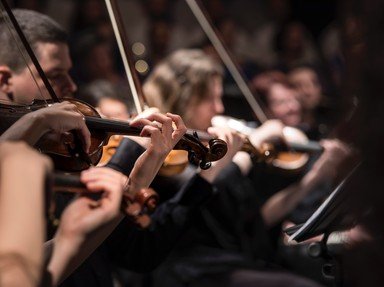Quiz Answer Key and Fun Facts
1. This moving sacred vocal form is characterized as polyphonic and usually a capella.
2. This musical form, often appearing in ceremonial or ritual music, is characterized by a flourish of brass instruments, especially the trumpet.
3. This musical form at times is ecstatic, ranting, pompous, and mostly irregular as it moves freely from one set of accents to the next.
4. This song type incorporates an uplifting melody, with or without lyrics, and is habitually tied to some cause or movement or ideal.
5. This choral piece is the musical setting of the Virgin Mary's utterance upon her visitation to cousin Elizabeth.
6. This instrumental piece usually features one instrument, but is sometimes written for two or three, and features several movements.
7. This musical form was often performed at night in the open air and is known for its fanciful melody and lightness.
8. This musical form reflects a fugal form for inspiration performed by string or wind instruments such as the lute or harpsichord.
9. This is the equivalent of a symphony only it's performed as a choreographed dance form accompanied by music, telling some kind of story and featuring light, graceful movements.
10. The distinction between a hymn and an anthem is defined by this:
Source: Author
chalcedony
This quiz was reviewed by FunTrivia editor
agony before going online.
Any errors found in FunTrivia content are routinely corrected through our feedback system.

